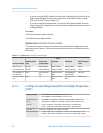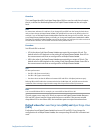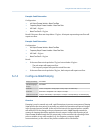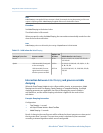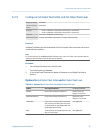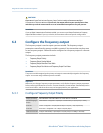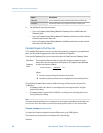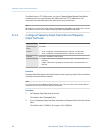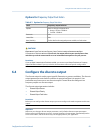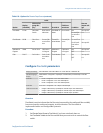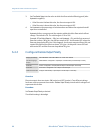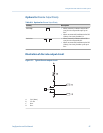
Option Description
Pulses/Unit A user-specified number of pulses represents one flow unit
Units/Pulse A pulse represents a user-specified number of flow units
2. Set additional required parameters.
• If you set Frequency Output Scaling Method to Frequency=Flow, set Rate Factor and
Frequency Factor.
• If you set Frequency Output Scaling Method to Pulses/Unit, define the number of pulses
that will represent one flow unit.
• If you set Frequency Output Scaling Method to Units/Pulse, define the number of units
that each pulse will indicate.
Calculate frequency from flow rate
The Frequency=Flow option is used to customize the frequency output for your application
when you do not know appropriate values for Units/Pulse or Pulses/Unit.
If you specify Frequency=Flow, you must provide values for Rate Factor and Frequency Factor:
Rate Factor The maximum flow rate that you want the frequency output to report.
Above this rate, the transmitter will report A110: Frequency Output Saturated.
Frequency
Factor
A value calculated as follows:
FrequencyFactor = x N
RateFactor
T
where:
T Factor to convert selected time base to seconds
N Number of pulses per flow unit, as configured in the receiving device
The resulting Frequency Factor must be within the range of the frequency output (0 to
10,000 Hz):
• If Frequency Factor is less than1 Hz,reconfigure the receiving device for a higher
pulses/unit setting.
• If Frequency Factor is greater than 10,000 Hz, reconfigure the receiving device for a
lower pulses/unit setting.
Tip
If Frequency Output Scale Method is set to Frequency=Flow, and Frequency Output Maximum Pulse Width is set
to a non-zero value, Micro Motion recommends setting Frequency Factor to a value below 200 Hz.
Example: Configure Frequency=Flow
You want the frequency output to report all flow rates up to 2000 kg/min.
The frequency receiving device is configured for 10 pulses/kg.
Solution:
Integrate the meter with the control system
90 Micro Motion
®
Model 1700 Transmitters with Analog Outputs



